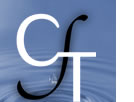 |
||||||||||
Notes from the CFT Library: Interactive Learning
This article was originally published in the Fall 2000 issue of the CFT's newsletter, Teaching Forum.
David Brown, Editor. Interactive Learning: Vignettes from America's Most Wired Campuses . Anker, 2000. 300 pages.
As Vice-President and Dean of the International Center for Computer-Enhanced Learning at Wake Forest University, David Brown uses his technological expertise to assemble a valuable collection of vignettes from "wired" classes across the country. Fascinated by what he calls a "storm of experiments" in using computers in the classroom, Brown allows instructors from all disciplines to share the benefits of technology in terms of "interactive learning, collaborative learning, learning by doing, and integrating theory and practice" (3). His premise, one clearly shared by the instructors of the courses profiled in the text, is that technology profoundly changes the experiences of both teacher and student, most often by creating an environment of shared discovery.
Yet because of the wide range of contributors he includes in the text, Brown resists traditional expectations about which disciplines are the most "wired". Interactive Learning profiles a wide range of courses and subject areas, from General Chemistry, Geomorphology, Calculus, Industrial Technology, and Anatomy to Anthropology, Psychology, Beginning Drawing, Literature, Women's Studies, and language courses. Of particularly note to readers will be the vignettes by people who are or have been Vanderbilt faculty, including Richard Shiavi, John Bourne, Arthur Brodersen, and Edward White of the Biomedical and Electrical Engineering departments; Philip Crooke, and Steven Tschantz of the Math Department; Luke Froeb of the Owen Graduate School of Management; Angelo Collins of Peabody College; and Mark Wollaeger of the English Department. Furthermore, the contributors themselves offer a range of computer experience and knowledge at the outset of their courses. Some began using technology in the classroom as novices themselves, while others had been experimenting with the available technologies for a decade or more.
Aside from the range of material covered, Interactive Learning's greatest strength lies in its organizational scheme. Each two to three page vignette of a single course falls under a larger disciplinary heading within the book. This type of organization allows instructors a great deal of ease in finding courses similar to their own, and noting what technologies have been used successfully. The instructor's unique voice and viewpoint remain present, even though each vignette follows a similar format. Topics within the vignettes include "Educational Theories", "Computer-Enhanced Techniques", Measured Results", and the invaluable "Lessons Learned". The "Techniques "section details brands of software and formats used (including litservs, web sites, "course-in-a-box" tool and other types of templates). In the "Lessons Learned" section, instructors candidly discuss what worked and what didn't, where to expect student resistance, how much preparation time to expect for the course, and where they found support and resources on their campuses. Further, each vignette ends with the instructor's full contact information, which usually includes the web site where student work is posted. Brown has constructed a resource for instructors planning a course with a few technological aspects or one that will meet only in a cyberspace "classroom". Similarly, the text's structure lends itself to browsing by specific course titles as well as gaining an idea of the range of computer activities used in a given discipline. With its innovative format, Interactive Learning acts as a hands-on guide to restructuring the learning experience by using a wide range of technologies.
HOME | ABOUT CFT | PROGRAMS | SERVICES | RESOURCES
Center for Teaching |
General Questions? Web Site Questions? Copyright ©2009 |
